
Sats 2022: the data behind this year’s results

When the key stage 2 Sats results were published this week, most people focused on the national numbers hitting the expected standard and made a quick judgement. Former schools minister Robin Walker, for instance, called the results “disappointing”.
But those average results were not even close to the full story of this year’s Sats. Away from the missing results and the “shambles” of the process, there is a context to this year’s assessments that needs a closer look. So that is what we have done below.
Number of pupils reaching the expected standard falls...
The headline data shows a drop in the number of pupils hitting the expected standard: 59 per cent of pupils met the expected standard in all three areas of reading, writing and maths this year.
- Sats 2022: ‘Disappointing but expected’ drop in attainment
- Sats 2022: Call for ‘thorough review’ amid fears about marking
- Support: Heads blast ‘ridiculous’ waits for help during Sats
This is far from the 90 per cent national target by 2030 that the government first set out in the Levelling Up White Paper and 6 percentage points below the 2019 level of 65 per cent.
...but it could have been much worse
The Sats results come off the back of unprecedented disruption to education, with this year’s group being impacted for the bulk of their KS2 teaching.
Paul Whiteman, general secretary of school leaders’ union NAHT, said that teachers and school leaders had worked “incredibly hard throughout the pandemic to minimise the impact of disruption on pupils’ learning”.
How severe was that disruption?
Attendance drops dramatically
At certain points during the pandemic, the majority of pupils were not in school, with learning taking place at home.
If we look at the 2020-21 year alone, even in periods that lockdown was not occurring (only in spring was there a national lockdown), there were significant numbers of pupils off due to Covid.
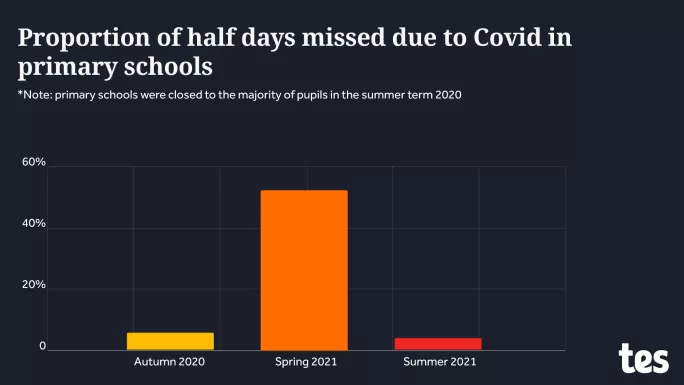
This impacted reading, but teachers managed to mitigate
Inevitably, some subjects would have been easier than others to teach or learn remotely, and this seems to be borne out in the results.
Data from EPI and Renaissance Learning shows significant learning loss in reading over the pandemic period, as the graph below illustrates. But it also reveals how teachers were able to mitigate some of that loss while children were in school.
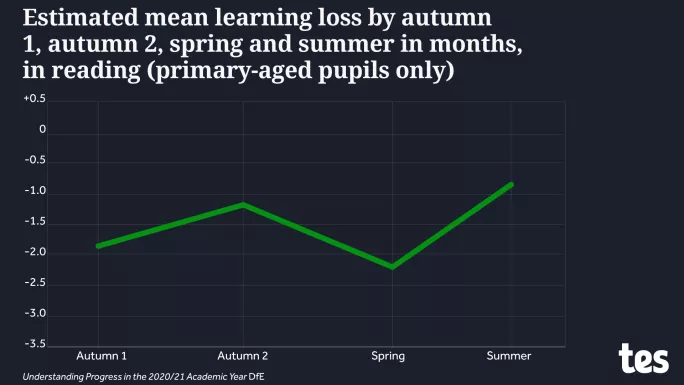
This has been reflected in the Sats results this year, with the proportion of pupils reaching the expected standard in reading rising slightly in 2022 despite the effects of Covid (74 per cent compared to 73 per cent in 2019).
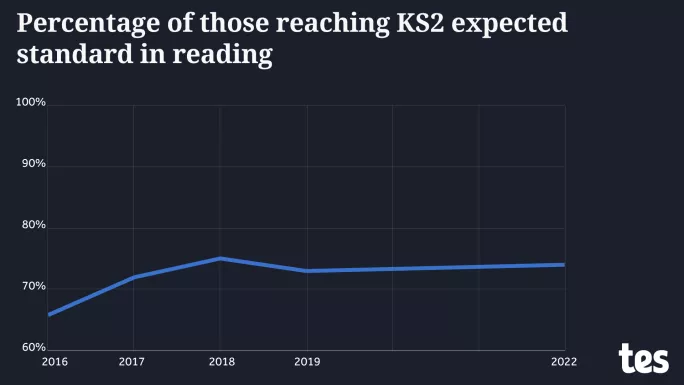
In 2019, the percentage of pupils reaching the expected standard in reading fell from 75 per cent to 73 per cent.
But things were much tougher in maths
The learning loss reported by the Renaissance and EPI figures in October last year showed much larger impacts of the pandemic, with more months of learning lost in maths on average than in reading.
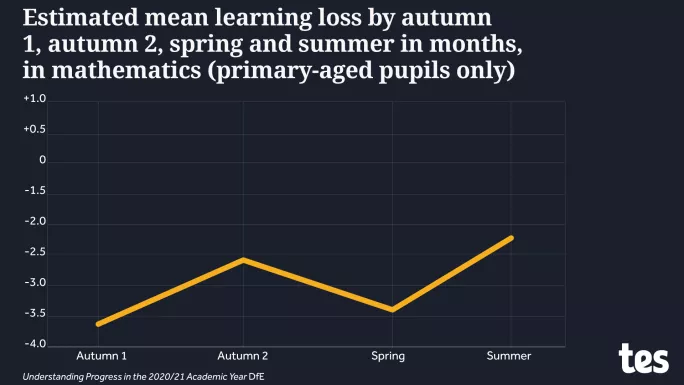
This was also clearly harder to claw back, with the percentage of those reaching the expected standard in KS2 maths the lowest since 2016, at 71 per cent, compared with 79 per cent in 2019.
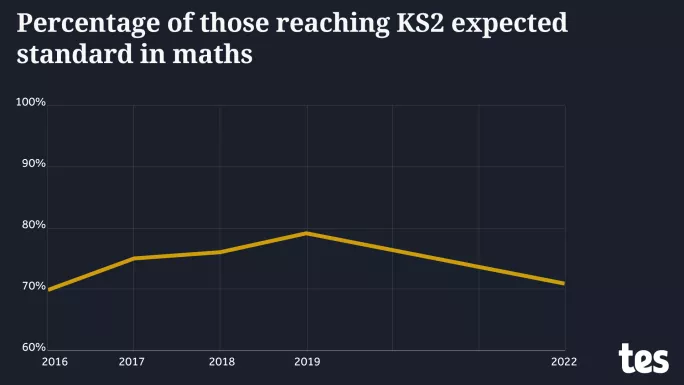
Even tougher for writing
It’s in writing, though, that the greatest impact seems to have been felt.
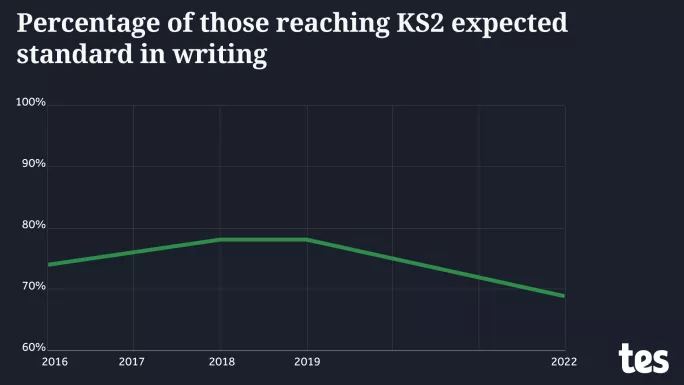
In 2022, the subject saw a 9 percentage point decrease compared to 2019, falling from 78 per cent to 69 per cent.
Speaking to Tes last month, Rebecca Boomer-Clark, chief executive officer of Academies Enterprise Trust, said writing standards had been affected by the pandemic and were ”clearly an issue that primaries across the country have faced”.
All this is why many leaders did not want Sats to go ahead
Given the amount of learning lost and the catch-up needed in schools, the return of Sats this year was met with much criticism in the primary sector.
Earlier this year, a survey carried out by NAHT suggested that more than nine in 10 school leaders believed this year’s Sats results would not provide meaningful data about their school’s performance.
Meanwhile, the survey of 2,000 school leaders found just 3 per cent of leaders thought the KS2 Sats should go ahead as planned.
So, what do the results really tell us? More money is needed
In June last year, the government’s education recovery commissioner, Sir Kevan Collins, quit the role after the government refused to deliver on the £15 billion catch-up package he had asked for.
And since then, many school leaders feel the package that has been provided has left schools and pupils short.
Clearly, from the statistics laid out in this piece, the level of learning loss was significant owing to the pandemic. Also clear is that teachers have done an amazing job to claw some of that lost learning back.
But clearest of all is that the government really does need to see these Sats results as an indication that offsetting the impact of the pandemic requires it to do much more than it is currently doing.
You need a Tes subscription to read this article
Subscribe now to read this article and get other subscriber-only content:
- Unlimited access to all Tes magazine content
- Exclusive subscriber-only stories
- Award-winning email newsletters
- Unlimited access to all Tes magazine content
- Exclusive subscriber-only stories
- Award-winning email newsletters
You need a subscription to read this article
Subscribe now to read this article and get other subscriber-only content, including:
- Unlimited access to all Tes magazine content
- Exclusive subscriber-only stories
- Award-winning email newsletters
- Unlimited access to all Tes magazine content
- Exclusive subscriber-only stories
- Award-winning email newsletters



